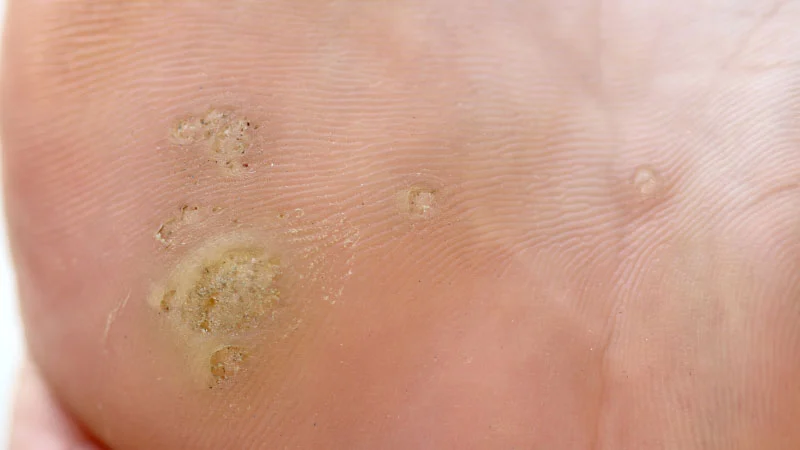If products like silicone, patches, or pens are tried without any positive response, it’s necessary to consult an experienced surgeon for treatment. Radiofrequency can be said to be the shortest and most advantageous method for treating corns.

IDEA Clinic performs corn treatment in all its branches within an average of 3-5 minutes. For the treatment of corns, it’s necessary to remove the corn along with its root. This is possible and easy with the radiofrequency method. Corns, along with their roots, are removed in about 3-5 minutes on average using Radio Frequency.
How Do Corns Go Away?
Corns are a common issue for many people. Although they can heal on their own, it’s a difficult process and not always guaranteed. Various products like corn patches, pens, and similar items may provide some success, but the fundamental problem will not go away unless it’s resolved.
First, it’s necessary to end the focal traumas occurring on the feet. For this, the choice of footwear should be changed. Shoes that fit the feet properly should be chosen, and shoes that are neither too small nor too large should be avoided.
As a precaution, wearing different shoes each day can be an option. For example, if you have three pairs of shoes, you can rotate them, wearing one pair each day. If you’re wearing dress shoes, you should switch to sports shoes, and vice versa.
There are home remedies for corns, but they’re not expected to be effective for all types of corns. They might be a solution for new cases, but the success rate for long-standing cases is very low. Medical removal is necessary for these types of corns. At home, feet can be soaked in water during a shower to soften them, and then scrubbed with a pumice stone, also known as a heel stone.
What Are Corns?
Corns are thick, hardened layers of skin that form in response to friction and pressure to protect the skin. They typically develop on the hands, feet, and fingers. Corns can be painful and unsightly.
The cause of corn formation is friction and pressure. Corns on the feet can result from wearing slippers or shoes that are too big or too small. Corns on the hands occur in the same way, due to the hands being subjected to friction and pressure. For example, continuous use of tools like shovels, hoes, or hammers, or sports equipment like tennis rackets can cause corns.
Why Do Corns Form on Feet?
Wearing shoes that are too big or too small is the biggest factor. When wearing shoes that don’t fit properly, the feet continuously rub against the shoes with every step. This constant friction in the same spot leads the body to thicken the skin as a precaution, resulting in corn formation. Wearing shoes that are too small applies pressure to various areas of the foot. The body wants to protect itself against this repeated pressure, thus forming corns.
Besides incorrect shoe choices, walking barefoot frequently can also be problematic. The direct contact of the skin with a surface causes friction, prompting the body to activate its defense mechanism as a precaution. Unfortunately, the body’s attempt to protect itself against these traumas can cause serious issues for people, as the thickening skin layer can become painful and uncomfortable over time.
Symptoms of Corns:
- Hard, crusty structure and swelling in the affected area
- Thickening and discoloration of the skin
- Pain when pressure is applied
How Are Corns Removed?
Continuous friction and contact of any part of the skin with another surface can lead to corn formation. For instance, when a person chooses shoes that are too big or too small, the foot continuously touches a point inside the shoe, and this friction signals the body that there’s a problem, prompting it to take precautions. Unfortunately, in trying to defend itself, the body may cause the formation of a corn, which can become a nuisance for the person.
A corn is a structure that appears on the skin surface, visible and palpable, forming between the bone and the skin due to constant pressure. The skin under constant pressure hardens and becomes crusty. After a while, it can reach a size that causes significant pain for the individual.